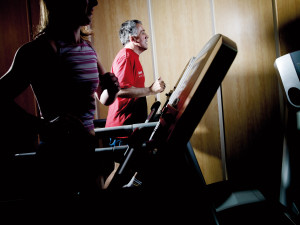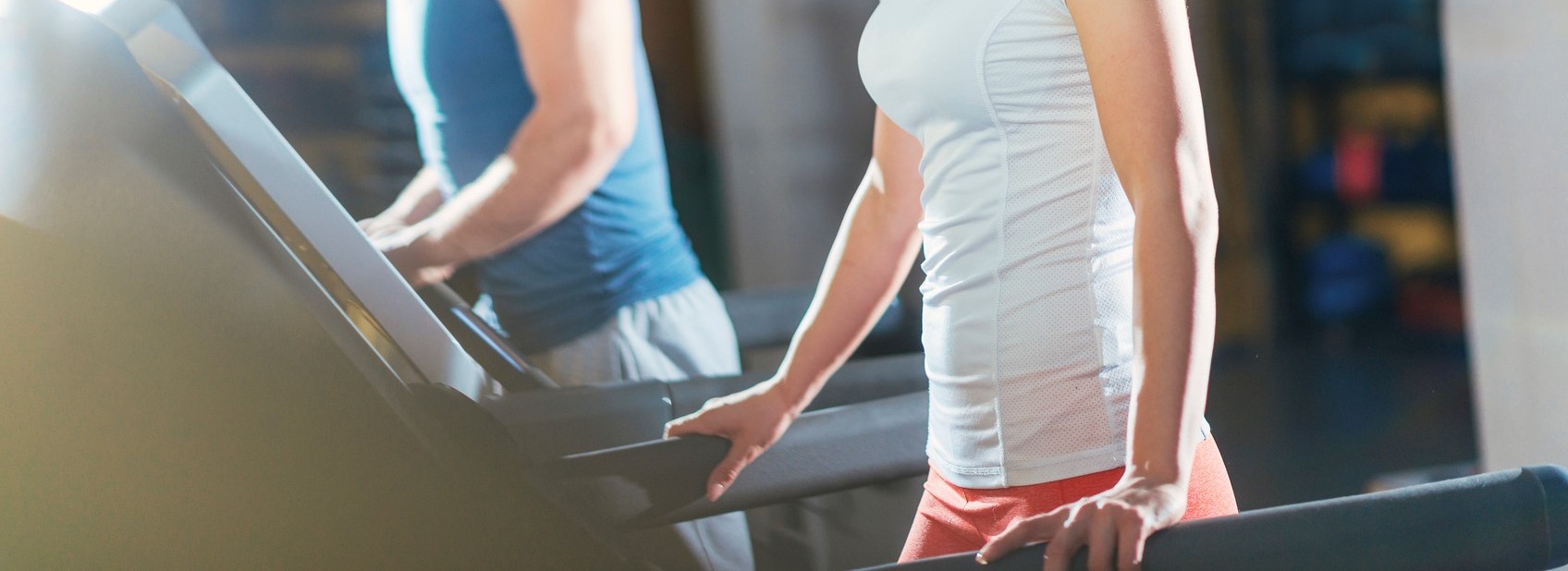Holding onto the treadmill is always wrong, regardless of your size, age, experience, weight or exercise goals (save for momentary heart-rate check).
Why shouldn’t I hold on to the Treadmill?
• It turns walking into ‘make-believe walking’ and running into ‘fake-running’
• It ruins posture
• It reduces calorie burn
• It reduces the effects of an incline
• It doesn’t help you improve balance
Why are you cheating yourself out of a workout?
When you press your palms down against the side rails/arms on a treadmill you lift your body and reduce body weight, giving your legs an easier ride!
Gripping the front bar, you are yanking your body forward with each step.
Any kind of holding on eliminates walking and running weight-bearing benefits.
Holding on with one hand is still cheating, creating unequal stresses to the body — even if you alternate hands. Even “resting” your hands on the machine compromises efficiency. Besides, the moment the speed or incline is increased, those resting hands will tighten.
Got a bad back?
The erector spinae: This structure keeps you upright while walking or jogging in daily life and stabilises the spine. Holding on to the treadmill cheats the lower back out of doing work, weakening the all-important core muscles.

Ruins Posture
Tall people who hold on are even more at risk for leaning forward, and exercising with a slumped posture. View a tall person from the side who’s clinging to the machine and note their poor posture. No medical professional would approve of this, even if you are 80 years old! Regardless of your height, holding on produces an unnatural, inefficient gait.
Still not convinced? You will burn fewer calories…
Because holding on eliminates a substantial workload from the legs, the actual burned calories is far lower than the number flashing on the console.
Walking or running hands-off burns 20 to 25 percent more calories for the same length of time. The leg and gluteal muscles are the largest muscles in the body. Large muscles means bigger calorie burn!
The Incline
When you grab onto the front bar or console, your body tilts back, making it perpendicular to the inclined tread surface. This is the same angle relationship as when walking on a level course!
In other words, if the tread incline is at 15 percent, and you’re gripping the machine, your entire body is angled back—at 15 percent! Meaning you’ve just cancelled out the effect of the grade.
Reduce the treadmill to an incline you can manage without holding on and then build up the incline over time.
Balance
The real world is full of uneven surfaces that you must walk on. Sensors in your feet and legs relay nerve impulses up to your brain, where they are interpreted: smooth asphalt, uneven concrete, lumpy grass, a bed of rocks, puddles to step around, etc. Your brain constantly sends signals down your spinal cord to help you navigate just where your body is in space, thus preventing you from falling.
Holding onto the treadmill interferes with these signals, thus downgrading your coordination. If you hold on, even lightly, you take valuable work away from your neuro-musculoskeletal system. In short, holding on outright deactivates your body’s balancing mechanism.
Ask yourself why are you holding on? Honestly because it makes it easier!
Ask yourself: How will holding on make me more efficient in the real world, where there’s nothing to hold on to?

